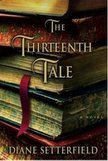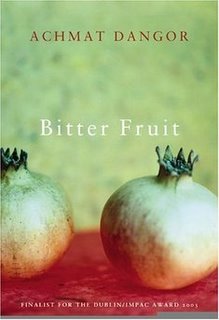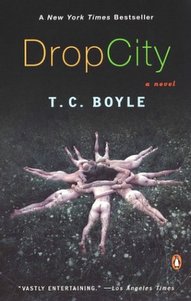The Thirteenth Tale by Diane Setterfield
 The publisher set high expectations with blurbs that linked this book with Jane Eyre, Wuthering Heights and Rebecca, expectations that in my view it didn't come close to fulfilling. I'm tempted to say I'm not the reader this book is looking for, but Jane Eyre, Wuthering Heights and Rebecca were cornerstones of my girlhood and Jane Eyre at least I've reread as an adult, without looking back on my unsophisticated younger self with distain. I understand why it has stood up for more than 150 years. What it has that The Thirteenth Tale doesn't have is a passionate statement of social criticism and a main character with a passionate nature tempered by reason and a sense of what is fair and what is right. Clearly, all three of these classics, though, have much more passionate characters and the characters are much more finely drawn and therefore memorable.
The publisher set high expectations with blurbs that linked this book with Jane Eyre, Wuthering Heights and Rebecca, expectations that in my view it didn't come close to fulfilling. I'm tempted to say I'm not the reader this book is looking for, but Jane Eyre, Wuthering Heights and Rebecca were cornerstones of my girlhood and Jane Eyre at least I've reread as an adult, without looking back on my unsophisticated younger self with distain. I understand why it has stood up for more than 150 years. What it has that The Thirteenth Tale doesn't have is a passionate statement of social criticism and a main character with a passionate nature tempered by reason and a sense of what is fair and what is right. Clearly, all three of these classics, though, have much more passionate characters and the characters are much more finely drawn and therefore memorable.I found of The Thirteenth Tale to be muddy to say the least, with zillions of loose ends and the characters poorly drawn. Margaret herself is a colorless heroine, possibly intended to be as Jane Eyre portrays herself, but if Jane is passion tempered by reason, Margaret is reason tempered by passion—which is distinctly less interesting. I know Margaret is "meant" to be passionate about her experience because she too is a twin longing for her soul mate, but in my opinion that just didn't work. The fact that Miss Winter turns out not to be a twin somewhat negates that whole theme, but aside from that the theme is just not well defined and carried through. Particularly weak is the intruding knowledge that Margaret has no relationship with her mother and that that has been traumatic for her. But all we see are these hints, with no view of the mother at all and only a paragraph or so telling us the solution to the mystery at the end.
In short I don't care much about Margaret. I don't see her motivations clearly and I don’t find her passion compelling. I didn't care what happened to her so finishing the book for me was largely a matter of feeling obliged since I'd decided to review it.
I'd say also that there are too many characters and too many of them are treated superficially. For example, Aurelius is an interesting character who gets frankly shortchanged. He finds a long lost sister, who's not characterized at all except for her family tree. We know nothing about Karen and have a vaguely "feel good" sense when the two are reunited. I found Aurelius a potentially interesting character, but inconsistent. He seems like a slightly disturbed adult haunting the scene of his birth and then we find out that he's a successful caterer, known and heavily patronized in the area. Those two sides of him are never reconciled so I ended up wondering who he really is.
Also all interest is lost in Adeline the minute Margaret figures out she wasn't, in fact, Miss Winter. So we end up with no real psychological understanding of Adeline. All in all I'd call the "ghost child" solution to the mystery a sort of a deus ex machina. I was really curious how Adeline could in fact morph into Miss Winter who does become more sympathetic as the novel progresses and is probably the most sympathetic (and most realized) character. But the author simply abandons that thought and Miss Winter turns out to have far more sympathetic origins. And Adeline who is initially an interesting character is abandoned.
And Hester similarly disappears the minute Margaret recognizes that the bones found when the house is demolished are not hers. She is initially somewhat sympathetic, then turns into the villain of the piece, but once we find she's not been murdered, she's no longer worth following. Granted it would be a much longer novel if Setterfield had followed up every character, but it seems to me the plot is messy and there are too many characters to begin with.
I just don't see this novel as likely to be of lasting interest or merit.






